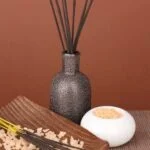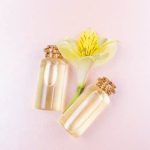Aromatherapy has been used for centuries as a natural way to promote physical, emotional, and mental well-being. In recent years, aromatherapy room diffusers have become increasingly popular for their ability to disperse essential oils into the air, creating a soothing and therapeutic environment. In this article, we will explore the benefits and origins of aromatherapy, as well as provide a comprehensive guide on how to use an aromatherapy room diffuser effectively.
Aromatherapy involves the use of plant extracts known as essential oils to improve one’s overall health and wellness. These oils can be inhaled or applied topically, and each oil possesses its own unique properties that can aid in relaxation, stress relief, improved sleep quality, and even pain management.
With the use of an aromatherapy room diffuser, these essential oils can be dispersed throughout a room in a safe and effective manner, allowing individuals to experience the benefits of aromatherapy without direct topical application.
Understanding how aromatherapy room diffusers work is crucial in maximizing the benefits of essential oils. By breaking down the essential oils into small particles and dispersing them into the air as a fine mist or vapor, diffusers allow for easy inhalation and absorption of the oils through the respiratory system.
This method of delivery provides both a pleasant aroma and potential therapeutic effects for those in the vicinity. Whether you are new to aromatherapy or looking to enhance your current practice with an aromatherapy room diffuser, understanding how these devices function is key in creating a relaxing and rejuvenating atmosphere in your home or workspace.
Understanding Aromatherapy Room Diffusers
Aromatherapy room diffusers are devices that are used to disperse essential oils into the air, creating a pleasant and therapeutic atmosphere. They work by breaking down the essential oil into small molecules and dispersing them into the air as a fine mist, allowing the aroma to spread throughout the room.
There are several types of aromatherapy room diffusers, including ultrasonic diffusers, nebulizing diffusers, heat diffusers, and evaporative diffusers. Each type of diffuser works in a slightly different way but all serve the same purpose of dispersing essential oils into the air for aromatherapy benefits.
- Ultrasonic Diffusers: These diffusers use water and ultrasonic vibrations to disperse essential oil molecules into the air as a fine mist.
- Nebulizing Diffusers: This type of diffuser uses pressurized air to break down essential oils into tiny particles and disperse them into the air without using heat or water.
- Heat Diffusers: Heat diffusers use gentle heat to evaporate the essential oils and release their aroma into the surrounding space.
- Evaporative Diffusers: These diffusers use a fan to blow air through a pad or filter containing essential oils, causing the oils to evaporate more quickly.
It is important to choose the right type of aromatherapy room diffuser based on your personal preferences, needs, and intended usage. Each type of diffuser has its own advantages and drawbacks in terms of how they disperse essential oils and create an aromatic environment in your living or working space.
When selecting an aromatherapy room diffuser, consider factors such as noise level, capacity, coverage area, lighting options (if any), maintenance requirements, and cost. By understanding how each type of aromatherapy room diffuser works and considering your specific needs, you can choose the right one for your home or workplace.
Choosing the Right Essential Oils
When it comes to using an aromatherapy room diffuser, one of the most important factors to consider is the choice of essential oils. Essential oils are concentrated plant extracts that have various therapeutic and medicinal properties. Each essential oil has its own unique scent and benefits, making it crucial to choose the right ones for your specific needs and preferences.
Popular Essential Oils and Their Benefits
There are numerous essential oils available in the market, each offering different aromas and benefits. Some popular essential oils commonly used in aromatherapy include lavender, peppermint, eucalyptus, lemon, tea tree, and rosemary. Lavender is known for its calming and relaxing properties, making it ideal for bedtime or stress relief.
Peppermint has an invigorating effect that can help with mental clarity and energy boost. Eucalyptus is often used for respiratory support, while lemon is known for its refreshing and mood-lifting qualities. Tea tree oil has antibacterial and antiviral properties, while rosemary is believed to improve focus and concentration.
Matching Essential Oils With Mood or Purpose
It’s essential to match the essential oils with your desired mood or purpose when using an aromatherapy room diffuser. For example, if you’re looking to create a peaceful ambiance for meditation or yoga practice, you may consider using lavender or frankincense essential oil. On the other hand, if you want to promote a productive environment for work or study, then diffusing rosemary or lemon essential oil could be beneficial.
Experimenting With Essential Oil Blends
Another way to maximize the benefits of aromatherapy is by experimenting with different essential oil blends. You can mix two or more essential oils together to create a personalized aroma that suits your specific needs. For instance, combining lavender and chamomile can enhance relaxation and sleep quality. Meanwhile, blending peppermint and lemon can help promote alertness and mental clarity during daytime use.
Overall,
Preparing the Aromatherapy Room Diffuser
When preparing an aromatherapy room diffuser, it is important to first ensure that the diffuser is clean and free from any residue or essential oil buildup. This can be done by following the manufacturer’s instructions for cleaning or wiping down the diffuser with a soft, damp cloth. It is crucial to make sure that the diffuser is completely dry before using it to avoid any malfunction.
Once the diffuser is cleaned and dry, it is time to add water. Most aromatherapy room diffusers have a designated water reservoir that can usually be found underneath the top cover of the device. Fill this reservoir with clean, room temperature tap water up to the specified fill line. Be careful not to overfill the reservoir as this can lead to spillage or malfunction of the device.
After filling the reservoir with water, it is time to add essential oils. Depending on the size of your diffuser and personal preferences, add 3-10 drops of your chosen essential oil into the water. It is important not to use too much essential oil as this can overpower and even irritate your senses. Replace the top cover of the diffuser and ensure it is securely in place before turning on the device and enjoying your aromatherapy experience.
Following these simple steps will allow you to prepare your aromatherapy room diffuser effectively and safely. By understanding how to use aromatherapy room diffuser correctly, you can create a relaxing and therapeutic environment in your home or workspace, helping you achieve maximum benefits from your chosen essential oils.
Operating the Aromatherapy Room Diffuser
Aromatherapy room diffusers are a wonderful way to enjoy the benefits of essential oils throughout your home or office. These devices work by dispersing essential oil molecules into the air, creating a pleasant and aromatic environment. Using an aromatherapy room diffuser is simple and can be a great addition to your wellness routine.
To start, choose your favorite essential oil or a combination of oils that suit your needs. Whether you want to relax, boost concentration, or relieve stress, there is an essential oil for every mood and purpose. Some popular options include lavender for relaxation, peppermint for clarity and focus, and eucalyptus for respiratory support.
Once you have selected your essential oil, prepare the aromatherapy room diffuser by filling it with water according to the manufacturer’s instructions. Add 5-10 drops of your chosen essential oil into the water reservoir. Then, place the cover back on securely and plug in the device.
Turn on the diffuser and select your desired settings, such as continuous mist or intermittent bursts. Enjoy the gentle sound of water vapor as it releases a fine mist of aromatic goodness into your space.
| Essential Oil | Main Benefits |
|---|---|
| Lavender | Relaxation and stress relief |
| Peppermint | Clarity and focus |
| Eucalyptus | Respiratory support |
As with any electrical device, it is important to use an aromatherapy room diffuser safely. Always place the diffuser on a flat surface away from any edges where it could be knocked over. Keep the cord out of walkways to prevent tripping hazards. Additionally, follow the manufacturer’s guidelines for cleaning and maintenance to ensure optimal performance from your diffuser.
By following these simple steps, you can enhance your environment with beautiful scents while benefiting from the therapeutic properties of essential oils.
Tips for Maximizing Aromatherapy Benefits
When it comes to using an aromatherapy room diffuser, there are a few tips and tricks that can help you maximize the benefits of this therapeutic practice. Aromatherapy has been used for centuries to promote relaxation, improve mood, and even alleviate certain physical ailments. By following these suggestions, you can enhance your overall aromatherapy experience and create a soothing atmosphere in your home or workspace.
Choose the Right Essential Oils
One of the most important factors in maximizing the benefits of aromatherapy is choosing the right essential oils for your needs. Different essential oils have different properties and can be used to achieve specific effects. For example, lavender is often used for relaxation and stress reduction, while peppermint is known for its energizing and invigorating qualities. Take some time to research the various essential oils available and their potential benefits before making your selection.
Experiment With Blends
Once you have selected your essential oils, consider experimenting with blends to create a customized aroma that suits your preferences. By combining different oils, you can create unique scents that cater to your specific needs. For example, mixing lavender and chamomile can promote relaxation and sleep, while blending lemon and eucalyptus can provide a refreshing and uplifting atmosphere.
Use the Diffuser Consistently
To reap the full benefits of aromatherapy, it’s important to use your room diffuser consistently. Whether you’re utilizing it for relaxation purposes or to freshen up a space, regular use of the diffuser will ensure that you experience its therapeutic effects on a daily basis. Set aside dedicated time each day to run your diffuser in order to maintain a consistent aromatic environment in your home or office.
By implementing these tips for maximizing aromatherapy benefits into your routine, you can elevate your overall wellness experience and enjoy the full potential of using an aromatherapy room diffuser.
Maintenance and Cleaning of Aromatherapy Room Diffuser
Aromatherapy room diffusers are a great way to enjoy the benefits of essential oils in your home. These devices work by dispersing the essential oil particles into the air, allowing you to breathe in the therapeutic aroma. However, it is important to properly clean and maintain your diffuser to ensure its longevity and effectiveness.
Here are some tips for maintaining and cleaning your aromatherapy room diffuser:
1. Regular Cleaning: It is important to clean your diffuser after every use to prevent the buildup of oil residue and mold. Follow the manufacturer’s instructions for cleaning, as different types of diffusers may require different cleaning methods.
2. Deep Cleaning: In addition to regular cleaning, it is recommended to perform a deep clean of your diffuser once a month. This can involve disassembling the diffuser and soaking certain parts in water and vinegar solution to remove any stubborn residue.
3. Use Distilled Water: To prevent mineral buildup in your diffuser, it is best to use distilled water instead of tap water. Mineral buildup can affect the performance of the diffuser and may cause it to malfunction over time.
By following these maintenance and cleaning tips, you can ensure that your aromatherapy room diffuser remains in good condition and continues to provide you with the therapeutic benefits of essential oils.
Conclusion
In conclusion, aromatherapy is a powerful and accessible way to improve your overall well-being. By using essential oils in conjunction with a room diffuser, you can create a tranquil and therapeutic environment that promotes relaxation and rejuvenation. The benefits of aromatherapy are vast, from reducing stress and anxiety to improving sleep quality and boosting mood. Incorporating the use of an aromatherapy room diffuser into your daily routine can have a significant positive impact on your mental and emotional health.
Aromatherapy room diffusers are easy to use and offer a convenient way to enjoy the benefits of essential oils. By following the step-by-step instructions for setting up and preparing the diffuser, as well as operating it effectively and safely, you can maximize the therapeutic effects of aromatherapy in your home or workspace.
Whether you are looking to create a calming atmosphere for meditation or relaxation, or invigorate your senses with an energizing blend of oils, understanding how to use aromatherapy room diffusers is key in enhancing your overall well-being.
To fully embrace the benefits of aromatherapy, it is important to select the right essential oils that cater to your specific needs. From lavender for relaxation to peppermint for increased focus, choosing the appropriate essential oils plays a crucial role in maximizing the potential benefits of aromatherapy.
Combined with proper maintenance and cleaning of your aromatherapy room diffuser, you can ensure its longevity and effectiveness for creating a soothing and inviting environment whenever needed. Overall, incorporating aromatherapy into your daily routine through the use of a room diffuser is a simple yet impactful way to promote relaxation and wellness in all aspects of life.
Frequently Asked Questions
How Do You Use Aromatherapy Diffuser?
An aromatherapy diffuser is simple to use. First, fill the water tank with clean water and add a few drops of your favorite essential oil. Then, turn on the diffuser and let it disperse the scent throughout the room.
How Do You Use a Diffuser in a Room?
Using a diffuser in a room is easy and can help create a pleasant atmosphere. Simply place the diffuser on a flat surface, add water and essential oils, then turn it on. The diffuser will spread the aroma throughout the room.
Where Should Aroma Diffusers Be Placed in a Room?
Aroma diffusers should be placed in areas where they can easily disperse the scent throughout the room. Good locations include near doorways, windows, or centralized areas so that the fragrance can evenly spread across the space. Experiment with placement to find what works best for your room size and layout.

Are you looking for a natural way to improve your health and wellbeing?
If so, aromatherapy may be the answer for you.





